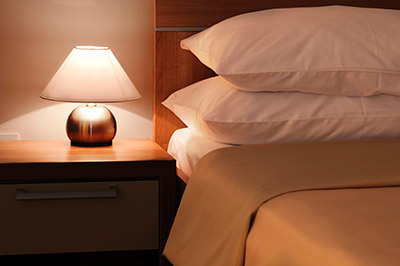What's on You Nighstand When Travelling - FocusPoint
Lisa Arredondo

Everybody travels differently. Some of us like to make sure we have the aisle seat on a plane, some of us like to make sure that everything is unpacked the moment we arrive and some of us like to travel in the early mornings. How we travel is as unique as the person who is traveling, but there are aspects to traveling that most us do. We call loved ones to let them know our itineraries, and we ensure that our carry-on luggage does not have any fluids over 3 ounces, we set our out of office reminders, read our destination reports and so on. We each take the necessary travel precautions before traveling to ensure our safety while away from home. However, what about when you are in your hotel room? What can you do to ensure the best possible outcome should an emergency occur? There are numerous training seminars and courses that you can take to help you or your organization become a smarter safer traveler, but this blog is about the best advice I received years ago; a ‘go bag’. I still use it every time I travel.
A ‘go bag’ is a bag used in case of an emergency. You can quickly grab it and escape the hotel with all of your vital information and documents. I keep mine on my nightstand everywhere I travel. Just like how we travel is unique, what is in your ‘go bag’ will be too, but there are some essential items that you should keep in it.
- A doorstop
- It can be a simple $2 doorstop you can purchase from any hardware store or a more advanced version with an alarm on it. The doorstop is placed under the door on the inside of the room. This will prevent an intruder from opening the door from the outside – either with a key or
- Passport or copy of it
- In an emergency, taking the time to find your passport could end in disaster, delaying you escaping the hotel or country.
- Small flashlight
- It is hard enough to walk around an area you are familiar with in the dark, it is extremely difficult to do so in an unfamiliar area during an emergency. A small, powerful flashlight will help you find your way to safety.
- Cell phone battery charger
- Having an additional charger on hand will ensure that you can contact your family, work, and even your travel risk management company to let them know where you are and aid you in getting you to safety.
- Cash
- Keeping a small amount of cash in the bag will enable you to take a cab to safety, get a meal, or buy some clothes if needed. If the emergency affects the local electrical grid, merchants will not be able to use their credit card machines, ATMs and the Internet will cease working.
- Vital medicine
- Having a few days (or more) worth of necessary medicine will give you time to contact your medical evacuation provider, family practitioner, or go to a local hospital to have the prescriptions refilled.
- A copy of your TRM provider card
- I keep a copy of my CAP card in my bag. In the event of an emergency, they are my first call. They can guide me to a safe location, contact my work, family and loved ones, help me obtain a new visa or passport, or get me medical attention so I can concentrate on the emergency at hand.
A ‘go bag’ will help you achieve the basic level of safety and security in a moment of crisis. Whatever else you put into it is up to you. I keep extra hair ties in mine. If I am in a crisis, my hair does not need to be. Travel safely.
